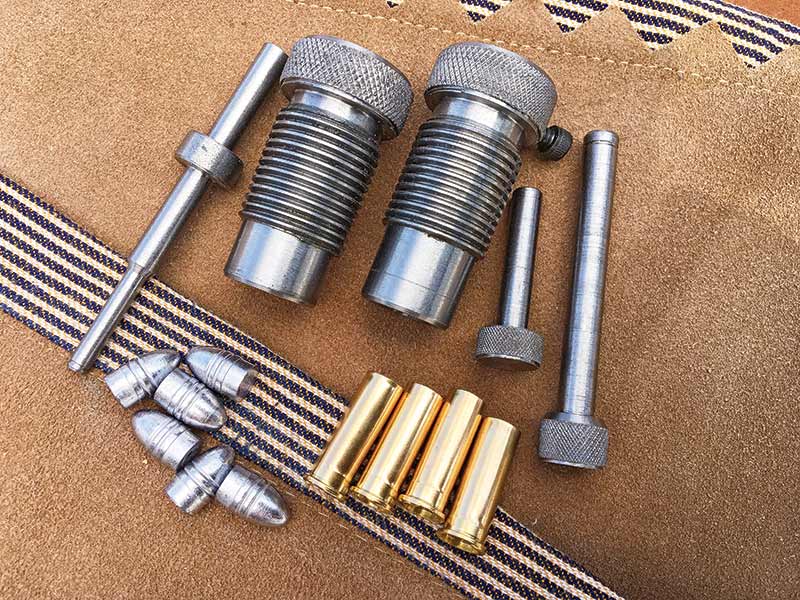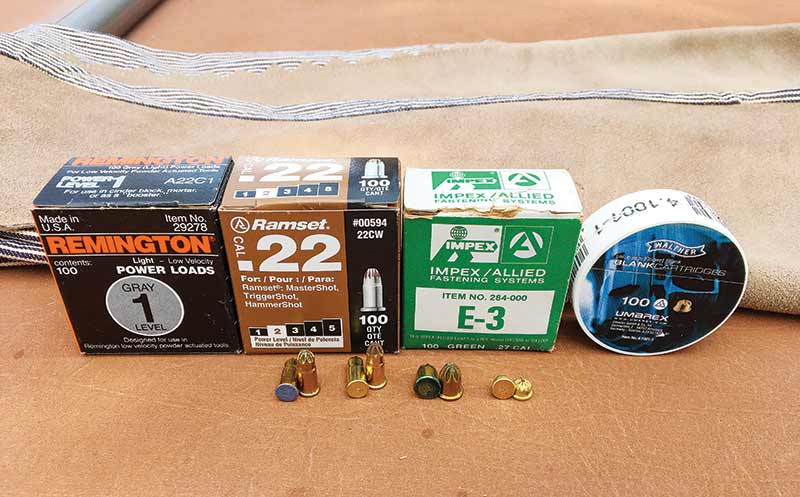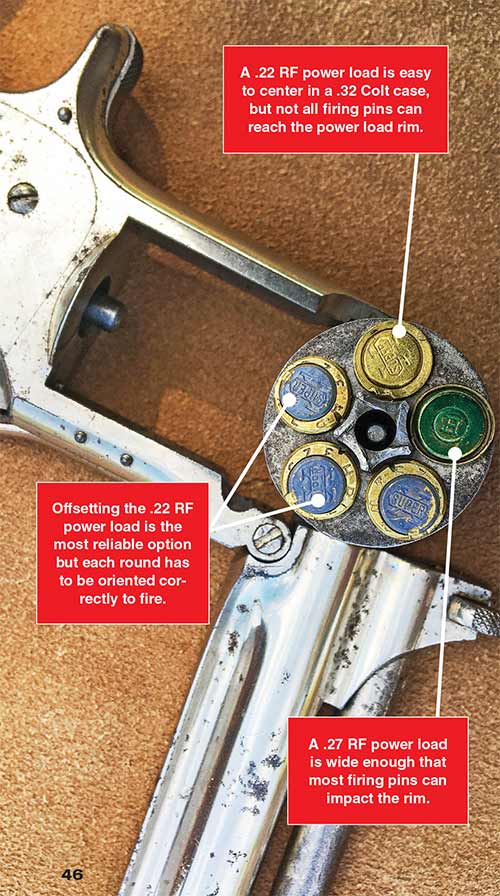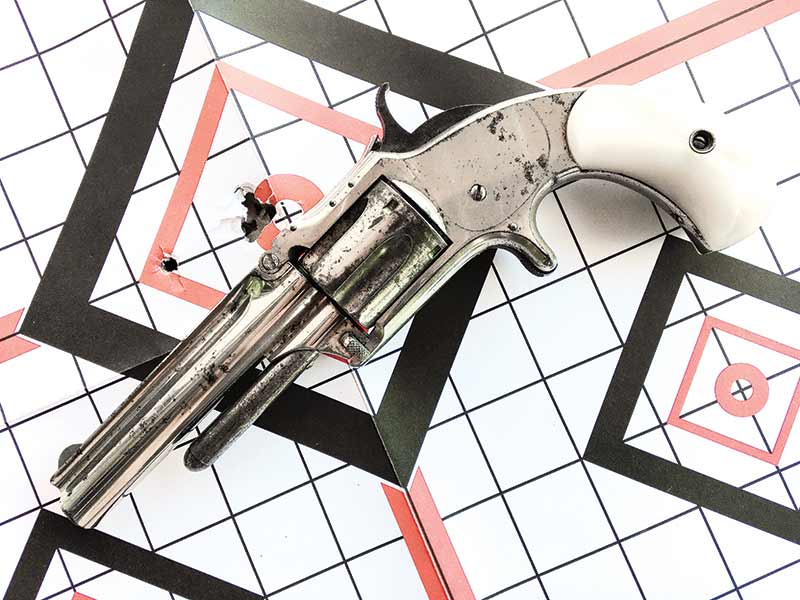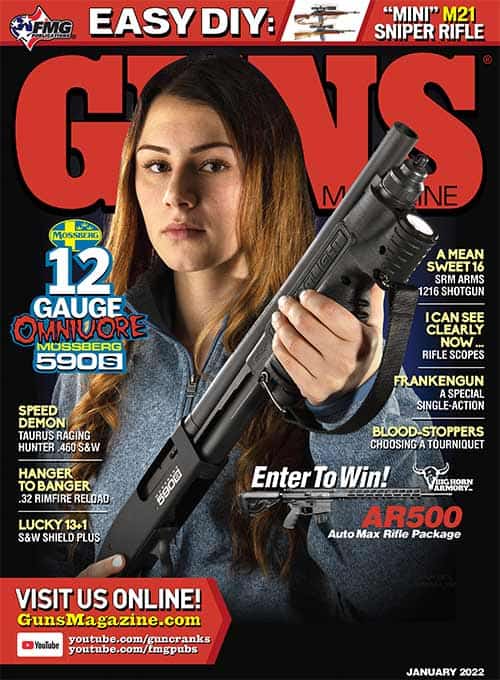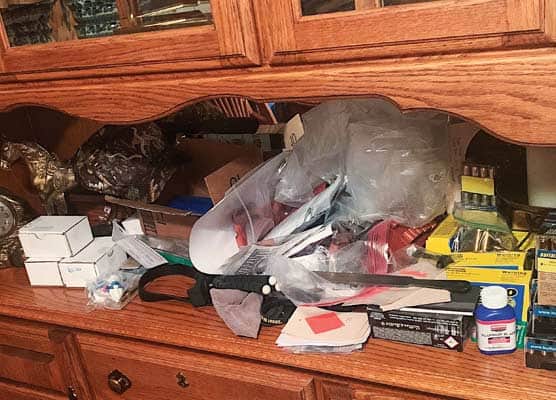Reloading The 32 Rimfire
Teaching An Old Dog New Tricks
Not long ago I bought a nickel-plated S&W Model 1-½ with mother-of-pearl grips whose former elegance couldn’t be dulled by time. The biggest problem? It was chambered in an obsolete caliber — .32 Rimfire.
I knew several companies offer rimfire reloading kits and components but the pandemic made them impossible to find. I decided to find another way. In my quest, I met resourceful individuals Dennis Heckman, Alan Tyznik and Jack Harrison. They’re .32 Rimfire aficionados and all developed ways to overcome the lack of tools and materials to reload their favorite round.
Piece Of Cake, Right?
The task seemed easy. The .32 Rimfire family of cases is the same diameter as the .32 Colt. I assumed I could drill out the primer cup just large enough to accept a commonly available .22 rimfire power load or .22 rimfire acorn round. The .22 Rimfire load would be centered but it appeared the firing pin should reach it. Heckman confirmed he had done this very thing and the modified cases worked properly in most of the .32 Rimfire firearms he owned.
Following Heckman’s instructions, I carefully modified the cases and attempted to test-fire the revolver. Much to my frustration, the firing pin did not reach deep enough into the rim to catch the .22 power load.
Heckman confided some shooters use .27-caliber power loads. I did some measuring. The firing pin in my revolver should be able to hit the .27 power load rim, but it would take precision machining to leave enough case rim to chamber correctly. My feeble drill press and tools were not exact enough for the task. Each attempt ended with the rim of the case coming off. But, in doing so, the .27 power load fit perfectly into the .32 Colt case, leaving only the power load rim exposed. A test fit in the revolver proved the modified case would chamber properly. I loaded up a few rounds to test. Excitement turned to frustration when nothing happened. An inspection of the rounds found no marks in the rims! The .27 rimfire rims did not hold the case far enough out to allow the firing pin to strike them!
Luckily, I just received a sampling of cases and reloading tools Heckman made in his home shop. Unlike the cases I made, Heckman offset the power load rim to match the rim of the .32 Colt case. With reserved excitement, I loaded up a batch of rounds.
After weeks of failures and frustrations, I was somewhat expecting another hurdle to appear, but the new cases worked! The elegant old revolver shot perfectly!
The Takeaway
Not all rimfire guns have identical firing pins, hit the cartridge in the same spot or at the same depth. While locating the power load in the center of the case eliminates the need to orientate each round so it can fire, it may not work in all guns. Using an offset style case means each case has to be oriented properly but more reliable ignition is possible.
Reloading Tools
Finding reloading equipment is a problem. Heckman enjoys the challenge of repurposing older tools, much like I want to make old guns shoot again. While there are options for those who enjoy searching for orphan reloading equipment, here is a list to ease the way:
• Sizing Die — A .32 Colt die will work perfectly, but they are scarce. One can be made with a size O drill bushing fit into an orphaned large-caliber neck-expanding die. A .32 S&W sizing die will not work.
• Neck sizer — If a .32 Colt neck sizer can’t be found, a Lee Universal neck expander will work. Note: I did not find a need for a neck expander when using heeled bullets.
• Bullet seater — A .32 S&W seating die will work.
• Crimp Die — I used heeled bullets and did not find a need to crimp. Some shooters use super glue to keep loose bullets in place.
• Power Load Remover — A hollow base stand of some sort will be required to allow the spent .22 case to be punched out.
Bullets
The original .32 rimfire used a heeled bullet. On a heeled bullet, the bulk of the bullet is the same diameter as the case, while a smaller-diameter base fits into the case mouth. The .32 Colt started the same, but the industry transitioned to a smaller bullet with a hollow base which fit inside the case, as most modern ammunition does now. The hollow base flared out to engage the rifling.
Finding old bullet molds can be difficult but the Ideal 299152 and 299153 were heeled.32 caliber. Accurate offers their 31-090S and 31-095H which also produce heeled bullets. If plinking is in order, the common .32 round ball can be used.
Propellant
The easiest option is to use tool power loads. Several manufacturers offer them. Ramset is the best known. The power loads are graded by power level signified by a number and color. Gray (1) is extra-low; Brown (2) low; Green (3) medium-low; Yellow (4) medium; Red (5) high; and Violet (6) extra-high.
Most shooters recommend using the lowest power (gray and brown) for revolvers and weaker actions. Green can work well for stronger rifle actions. As with any older firearm, approach higher power loads with caution.
Another option is to use .22 acorn loads used to train hunting dogs and starter guns for sporting events. The small load is used to ignite a larger powder charge, usually black powder.
Most .32 rimfire reloaders modify .32 Colt and .32 S&W cases. The .32 Colt cases easily convert. The .32 S&W cases are larger and require some lathe work on the base.
Another Option
If all of this sounds like too much work, I do have an Easy Button option. Unfortunately, it has a tragic side.
When I first started down this road, I watched a video on YouTube. In it, Alan Tyznik gave a demonstration on how to easily reload .32 RF using a reloading kit he designed, complete with every tool needed to be successful using bullets and cases sold by Gunbroker.com seller “Tenmile.” I contacted Alan about the kit, then got caught up in other more pressing projects.
A year later, I attempted to contact Alan again, only to find out he had passed away at the age of 56. Hoping I could still purchase a reloading kit, I contacted Tenmile, (Jack Harrison), and asked what his relationship was with Alan Tyznik. His response: “Alan was my nephew, best friend and partner in all sorts of shenanigans.”
Luckily for us, Harrison is honoring Tyznik’s legacy by continuing to produce the .32 reloading kits, bullets, and cases — truly a living memorial.
The Results
Thanks to Dennis, Alan and Jack, my quest to shoot my vintage 1870s S&W revolver was a success any way you look at it. I learned useful things along the way and the results were an accurate load that chronographed at 450 FPS, far below the original .32 Short Rimfire velocity of 945 FPS. I could have gone to a more powerful load but I was punching paper, not hunting rabbits. Many members of online forum “Castboolits” at Gunloads.com have used stronger power loads in stronger rifle actions. I recommend searching the forum for a wealth of related information.
What’s next? I saw a cool old Colt Deringer in .41 RF at a recent gun show that started the wheels turning. Since I now know the way, it wouldn’t take much to make the dog bark!



